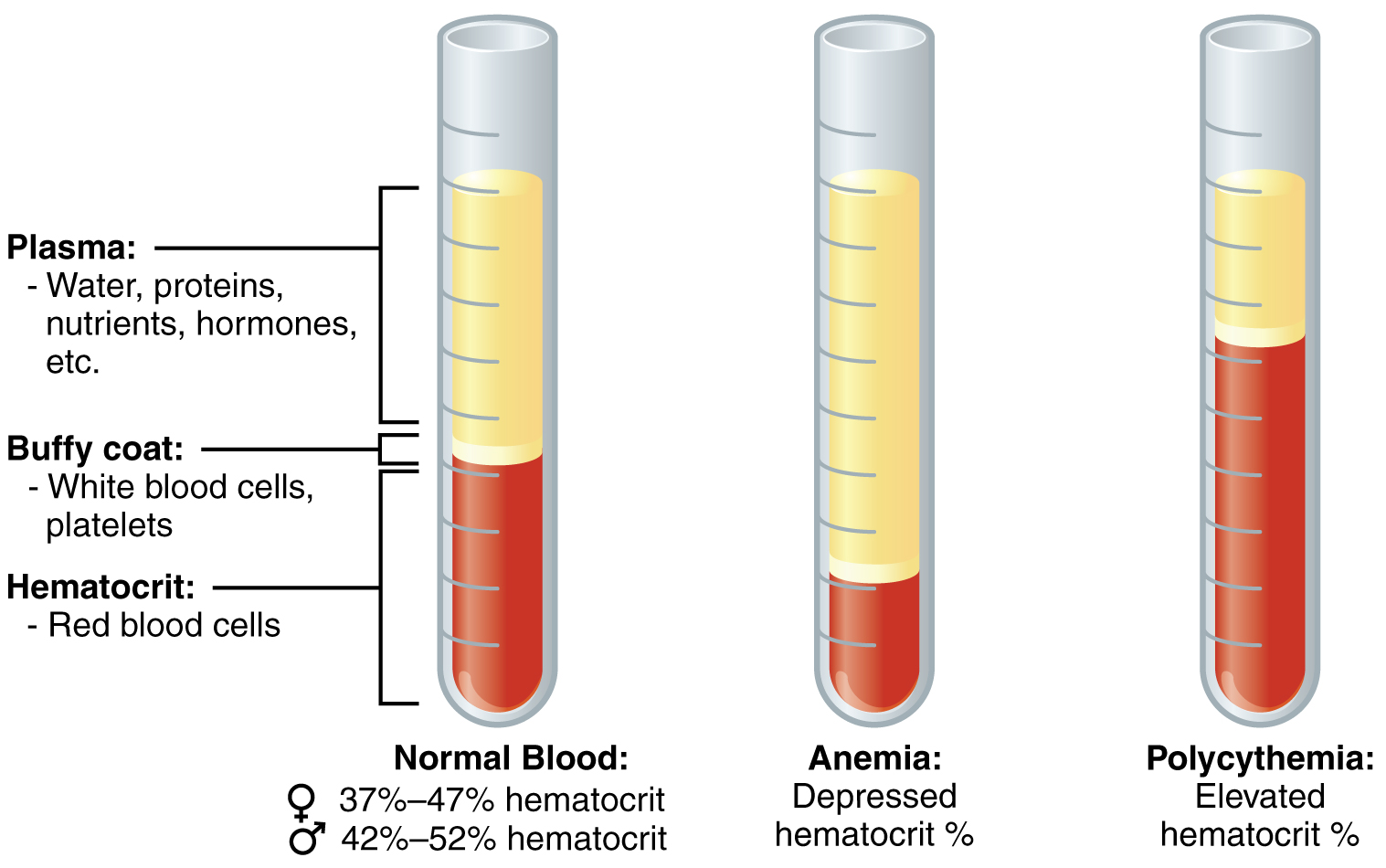The word polycythemia indicates increased red blood cells, white blood cells, and platelets. Most of the time, it is used in place of erythrocythemia, or pure red blood cell increase, such as in secondary polycythemia.
The term polycythemia is reserved for the myeloproliferative disorder called polycythemia vera, in which all 3 peripheral blood cell lines can be increased. Erythrocytosis or erythrocythemia is a more specific term that is used to denote increased red blood cells.
pathophysiology:
Increased hemoglobin and hematocrit values reflect the ratio of red blood cell mass to plasma volume. Any change in either the hemoglobin or the hematocrit can alter test results.
Relative polycythemia, or erythrocythemia, results from decreased plasma volume (G a isb ö ck syndrome). A true polycythemia or erythrocythemia results from increased red blood cell mass. Therefore, hemoglobin and hematocrit levels cannot accurately help make this distinction. Direct measurement of red blood cell mass is necessary to differentiate these conditions.
In primary polycythemia, the disorder results from a mutation expressed within the hematopoietic stem cell or progenitor cells, which drives the eventual accumulation of red blood cells. The secondary polycythemic disorders may be acquired or congenital; however, they are driven by circulating factors that are independent of the function of hematopoietic stem cells.
source: medscape

No comments:
Post a Comment